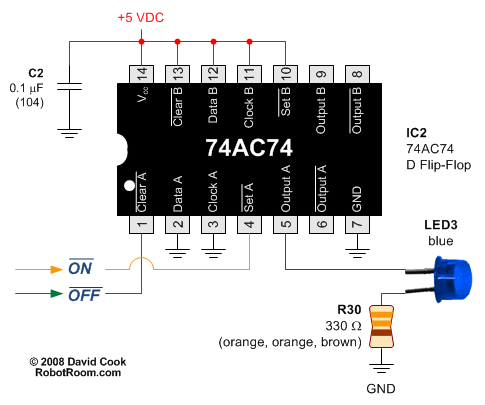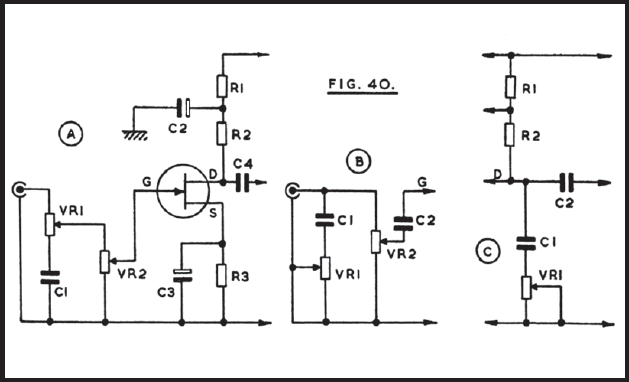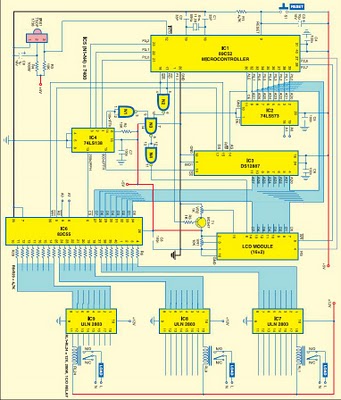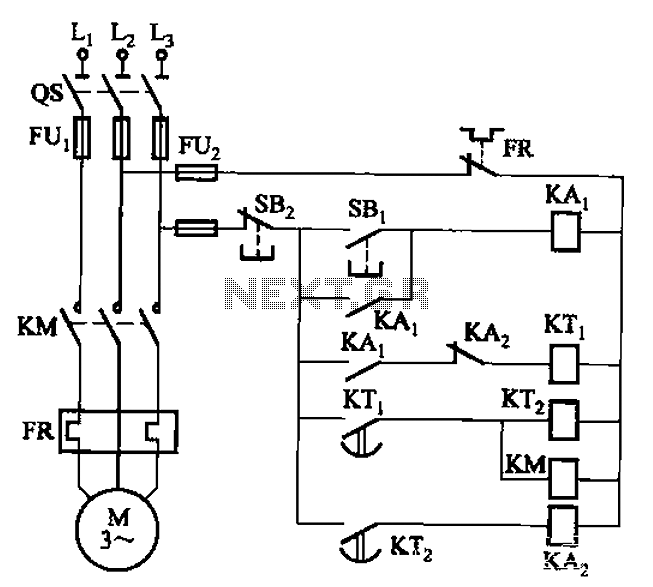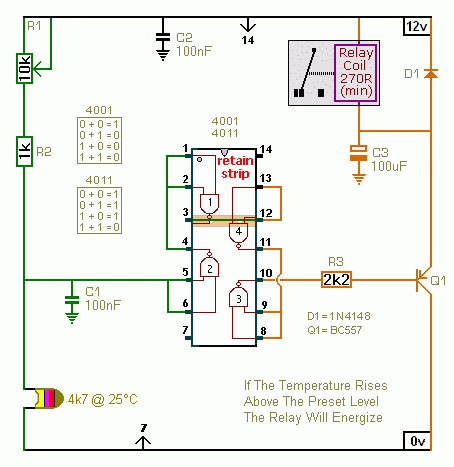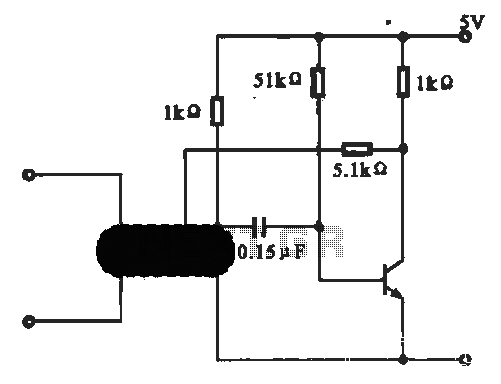
Infra Red Remote Control Extender
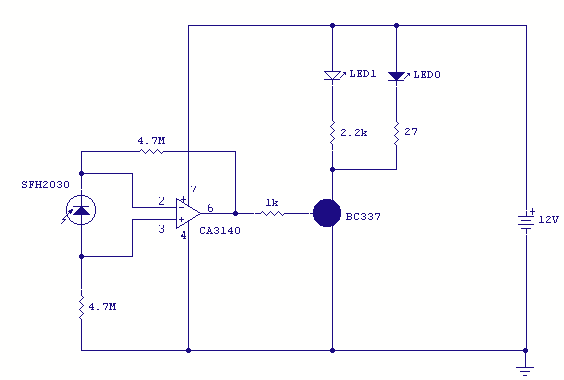
I have seen these devices advertised in magazines, they sell for around £40-£50 and use radio to transmit between receiver and transmitter. This version costs under £5 to make and uses a cable connection between receiver and transmitter. For example, if you have a bedroom TV set that is wired to the video or satellite in another room, then you can change channels on the remote satellite receiver using this circuit.
The described circuit provides a low-cost solution for controlling a satellite receiver or similar device remotely using a wired connection. The primary components of this circuit include a transmitter unit that connects to the remote control and a receiver unit that interfaces with the satellite receiver.
The transmitter unit typically consists of a microcontroller or a simple logic circuit that interprets the signals from the remote control. It converts these signals into a format suitable for transmission over a cable. The circuit may include a small infrared (IR) LED or a similar device to emit the control signals, which can be directed toward the satellite receiver.
The receiver unit is designed to capture the signals sent from the transmitter. It usually contains a photodiode or phototransistor that detects the emitted signals and converts them back into electrical signals. These signals are then processed by another microcontroller or logic circuit that replicates the function of the original remote control.
The connection between the transmitter and receiver can be accomplished using a standard audio or video cable, which helps in maintaining a reliable and interference-free communication link. This wired approach eliminates the need for radio frequency transmission, which can be subject to interference and range limitations.
To implement this circuit effectively, it is essential to ensure that the wiring is appropriately shielded and that the components are positioned to avoid any potential signal loss. Additionally, careful consideration should be given to the power supply requirements of both the transmitter and receiver units to ensure consistent operation.
Overall, this circuit represents a cost-effective alternative to commercially available wireless remote control systems, providing users with the ability to control their devices without the significant expense associated with wireless technology.I have seen these devices advertised in magazines, they sell for around £40-£50 and use radio to transmit between receiver and transmitter. This version costs under £5 to make and uses a cable connection between receiver and transmitter. For example, if you have a bedroom TV set that is wired to the video or satellite in another room, then you can change channels on the remote satellite receiver using this circuit.
🔗 External reference
The described circuit provides a low-cost solution for controlling a satellite receiver or similar device remotely using a wired connection. The primary components of this circuit include a transmitter unit that connects to the remote control and a receiver unit that interfaces with the satellite receiver.
The transmitter unit typically consists of a microcontroller or a simple logic circuit that interprets the signals from the remote control. It converts these signals into a format suitable for transmission over a cable. The circuit may include a small infrared (IR) LED or a similar device to emit the control signals, which can be directed toward the satellite receiver.
The receiver unit is designed to capture the signals sent from the transmitter. It usually contains a photodiode or phototransistor that detects the emitted signals and converts them back into electrical signals. These signals are then processed by another microcontroller or logic circuit that replicates the function of the original remote control.
The connection between the transmitter and receiver can be accomplished using a standard audio or video cable, which helps in maintaining a reliable and interference-free communication link. This wired approach eliminates the need for radio frequency transmission, which can be subject to interference and range limitations.
To implement this circuit effectively, it is essential to ensure that the wiring is appropriately shielded and that the components are positioned to avoid any potential signal loss. Additionally, careful consideration should be given to the power supply requirements of both the transmitter and receiver units to ensure consistent operation.
Overall, this circuit represents a cost-effective alternative to commercially available wireless remote control systems, providing users with the ability to control their devices without the significant expense associated with wireless technology.I have seen these devices advertised in magazines, they sell for around £40-£50 and use radio to transmit between receiver and transmitter. This version costs under £5 to make and uses a cable connection between receiver and transmitter. For example, if you have a bedroom TV set that is wired to the video or satellite in another room, then you can change channels on the remote satellite receiver using this circuit.
🔗 External reference
Warning: include(partials/cookie-banner.php): Failed to open stream: Permission denied in /var/www/html/nextgr/view-circuit.php on line 713
Warning: include(): Failed opening 'partials/cookie-banner.php' for inclusion (include_path='.:/usr/share/php') in /var/www/html/nextgr/view-circuit.php on line 713
